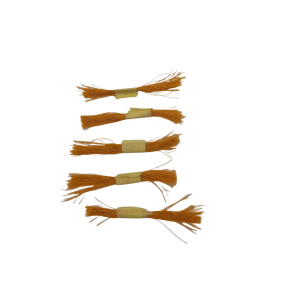Introduction
This is a difficult operation because the cotton cannot be ignited without the firing wire (energy).
Before the cotton can be measured perform a wire and cotton correction determination.

How to Measure the Firing Energy for Different Wire
The CAL3K requires the ‘COTTON + WIRE CORR’ because it will deduct the energy (in Degree C) from the raw rise. The energy of the cotton thread is never needed by itself.
Calibrate the Cotton and Wire Correction
Here is the brief procedure:
| Change the ‘MISFIRE LIMIT’ to ZERO. This disables it. | |
| Change the ‘COTTON + WIRE CORR’ to ZERO. | |
| Prepare a vessel as normal (with cotton) but without sample. | |
| Run a determination. | |
| At the end remove the vessel and read ‘READ LAST N_RISE’. This is the compensated nett temperature rise. Since the compensation was set to zero (step 2) it is the new cotton and wire correction. | |
| Repeat this operation 3 times and enter the average in to the ‘COTTON + WIRE CORR’ field. |
Measure the Cotton Thread
Use 10 cotton threads as a sample.
| Prepare the vessel with one cotton thread hanging on the firing wire. | |
| Weigh 10 cotton threads in to the crucible. | |
| Run a determination. | |
| At the end remove the vessel and read ’READ LAST N_RISE’. This is the temperature rise produced by 10 cotton threads. | |
| Read the result in KJ/g. This is the energy of 10 cotton threads. | |
| Set the ‘MISFIRE LIMIT’ to 0.44C |


Cotton and Wire Correction Video
Watch this video showing how to correct for cotton threading
Watch VideoSummary
The cotton CV is never needed. The above procedure illustrates how it can be done. The purist will argue that the rise of 10 cotton threads is not near the calibration rise. If this concerns you then increase the amount of cotton threads until the lower rise limit is satisfied.


